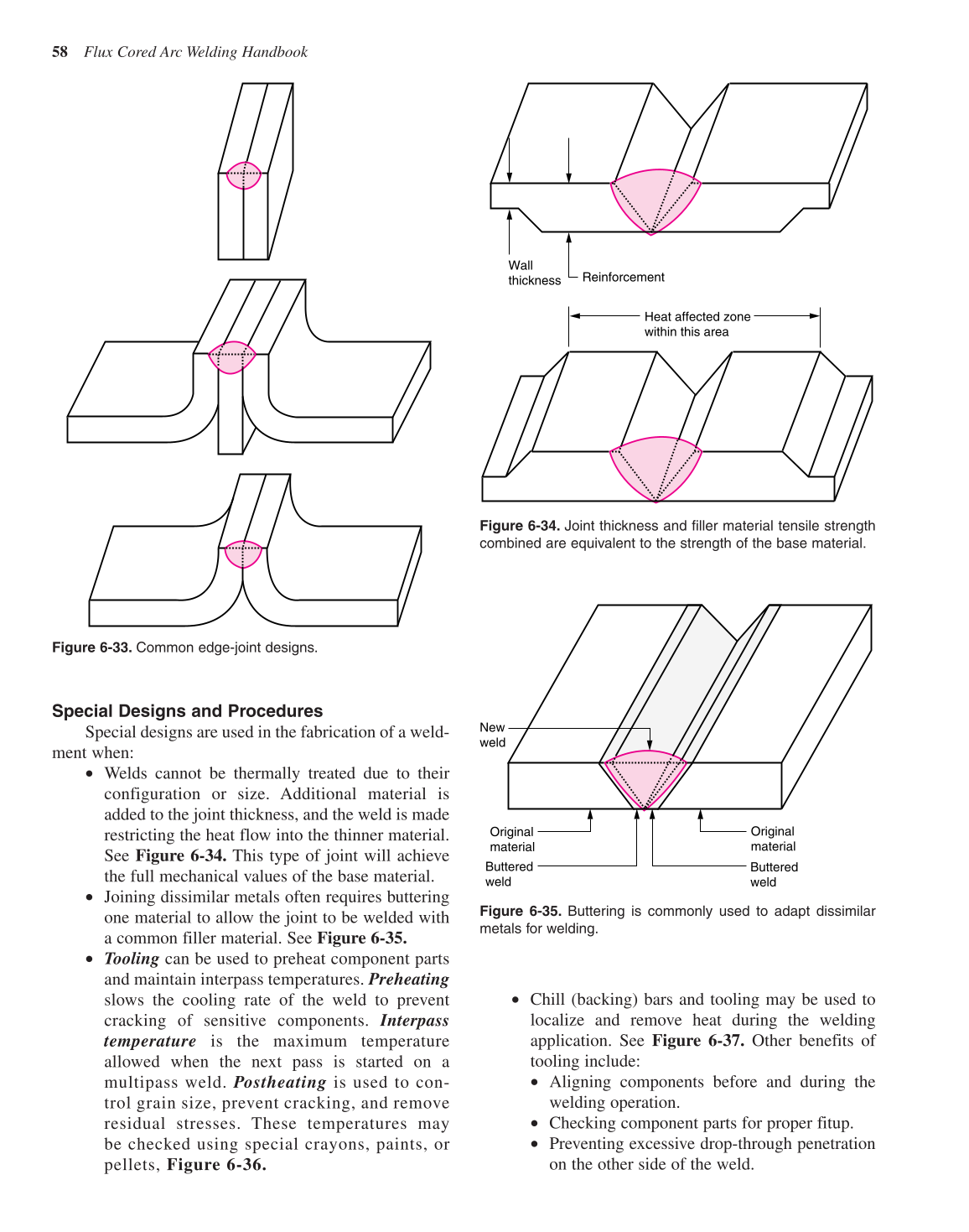Special Designs and Procedures
Special designs are used in the fabrication of a weld-
ment when:
• Welds cannot be thermally treated due to their
configuration or size. Additional material is
added to the joint thickness, and the weld is made
restricting the heat flow into the thinner material.
See Figure 6-34. This type of joint will achieve
the full mechanical values of the base material.
• Joining dissimilar metals often requires buttering
one material to allow the joint to be welded with
a common filler material. See Figure 6-35.
• Tooling can be used to preheat component parts
and maintain interpass temperatures. Preheating
slows the cooling rate of the weld to prevent
cracking of sensitive components. Interpass
temperature is the maximum temperature
allowed when the next pass is started on a
multipass weld. Postheating is used to con-
trol grain size, prevent cracking, and remove
residual stresses. These temperatures may
be checked using special crayons, paints, or
pellets, Figure 6-36.
• Chill (backing) bars and tooling may be used to
localize and remove heat during the welding
application. See Figure 6-37. Other benefits of
tooling include:
• Aligning components before and during the
welding operation.
• Checking component parts for proper fitup.
• Preventing excessive drop-through penetration
on the other side of the weld.
58 Flux Cored Arc Welding Handbook
Figure 6-33. Common edge-joint designs.
Figure 6-34. Joint thickness and filler material tensile strength
combined are equivalent to the strength of the base material.
Heat affected zone
within this area
Wall
thickness
Reinforcement
Figure 6-35. Buttering is commonly used to adapt dissimilar
metals for welding.
New
weld
Original
material
Buttered
weld
Original
material
Buttered
weld
